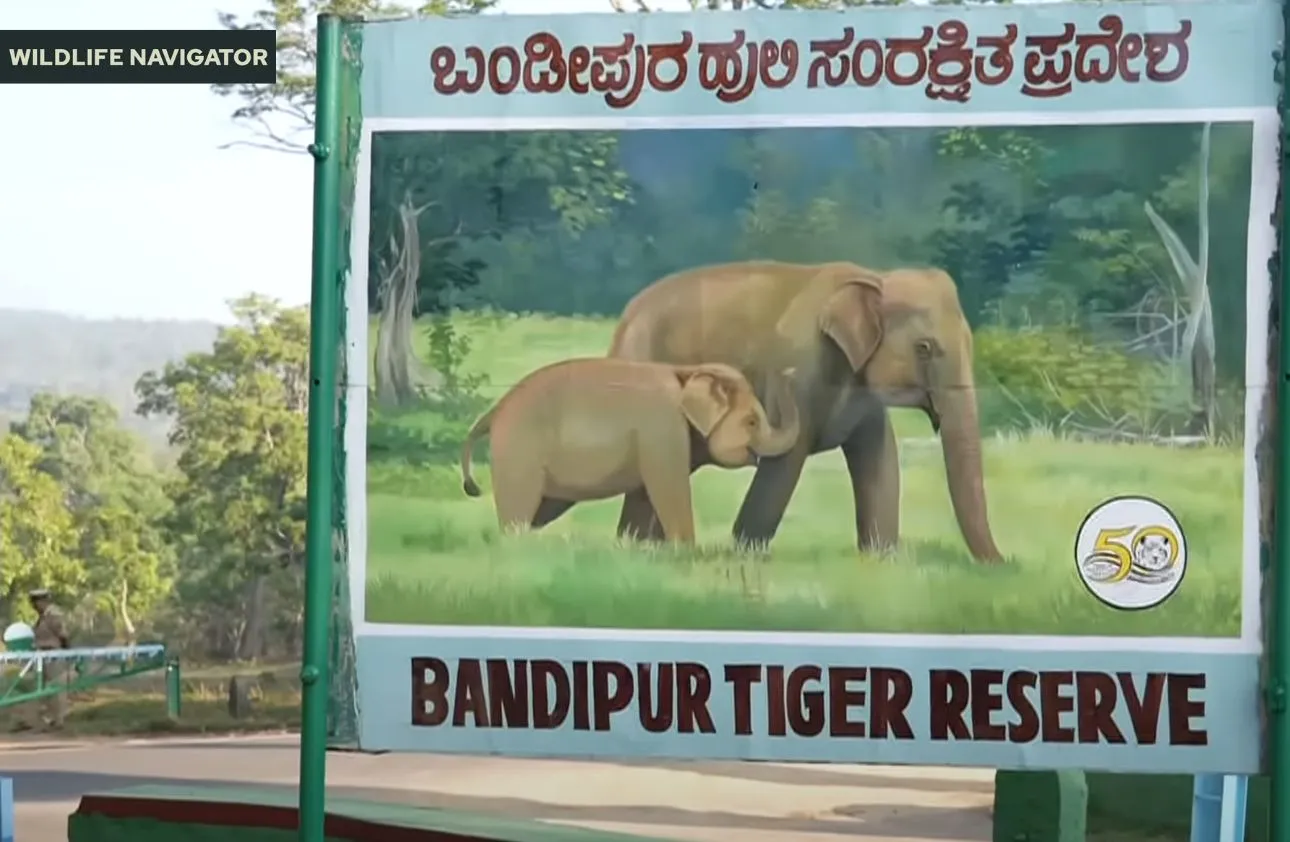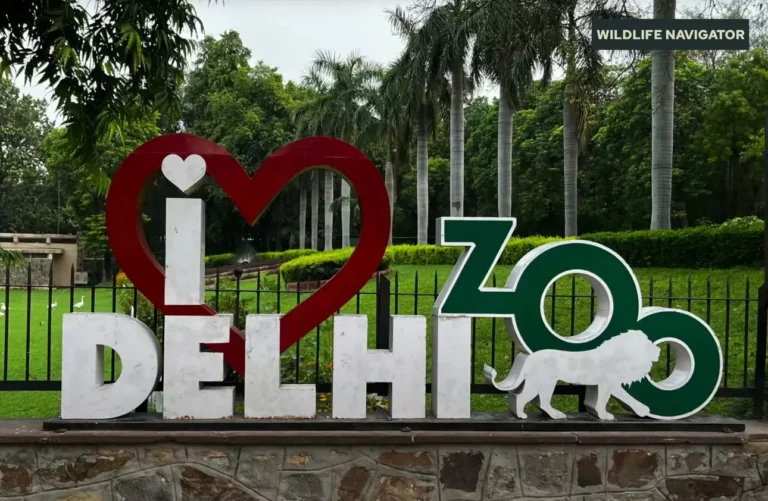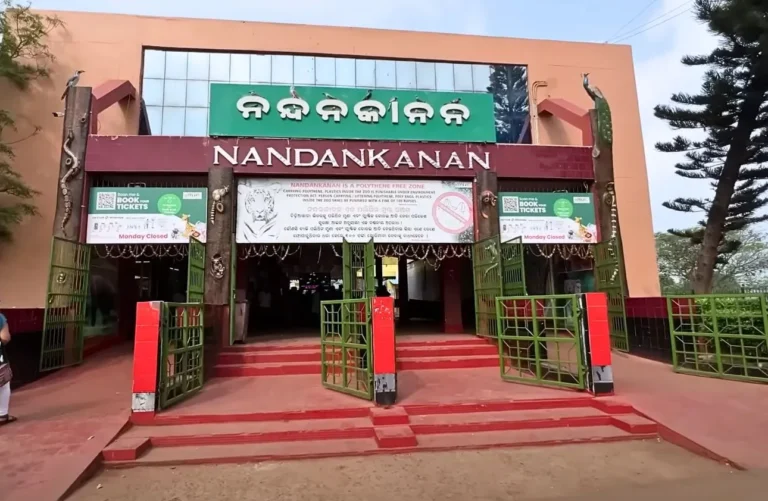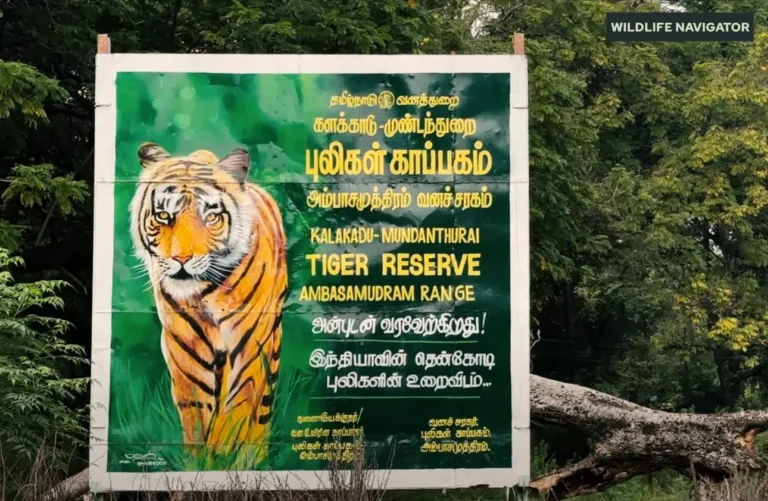Bandipur National Park & Tiger Reserve – A Complete Travel Guide

Bandipur National Park stands as one of India’s finest wildlife sanctuaries, blending natural beauty with rich biodiversity. Located in Karnataka, along the Mysore–Ooty highway, it is an integral part of the Nilgiri Biosphere Reserve, which also includes Mudumalai (Tamil Nadu), Wayanad (Kerala), and Nagarhole (Karnataka). Together, these biosphere reserve forms one of the largest stretches of protected forests in southern India, offering a safe haven for countless species of flora and fauna.
What makes Bandipur truly special is its reputation as a tiger reserve, playing a vital role under India’s Project Tiger initiative since 1973. Today, it is one of the most popular wildlife destinations in South India, attracting nature lovers, photographers, adventure seekers, and families alike.
From spotting the majestic Royal Bengal Tiger and herds of Asiatic Elephants to witnessing exotic bird species and exploring scenic landscapes, Bandipur offers an unforgettable jungle experience. For those seeking to reconnect with nature, this park is not just a safari stop, but a journey into the heart of the wild.
History of Bandipur National Park
Bandipur’s story is deeply tied to the history of the Mysore Maharajas, who once used this forest as their private hunting ground. The fertile land, abundant wildlife, and rich forest cover made it a favoured spot for royal shikar (hunting expeditions). Tigers, elephants, leopards, and other wild animals were hunted here as symbols of prestige and power during the princely era.
With time, however, awareness grew about the importance of conserving India’s fast-depleting wildlife. In 1931, a portion of these forests, measuring around 90 sq. km., was declared as a game sanctuary under the name Venugopala Wildlife Park. This marked the beginning of official protection for Bandipur’s wilderness.
The most significant milestone came in 1973, when Bandipur was declared a Tiger Reserve under India’s landmark Project Tiger initiative. The protected area was expanded, and hunting was completely banned. Over the years, Bandipur grew to cover 874 sq. km., forming part of the larger Nilgiri Biosphere Reserve, which today spans over 5,500 sq. km. across three states.
Today, Bandipur stands as a symbol of India’s conservation success stories. The tiger population has steadily grown here, and the park is also home to the largest population of Asian elephants in southern India. From a royal hunting ground to a premier wildlife destination, Bandipur has undergone a remarkable transformation, balancing conservation with eco-tourism.
aller mammals. For photographers and nature enthusiasts, every safari feels like entering a live documentary.
Location, Geography, Flora & Fauna of Bandipur National Park
Location & Geography
Bandipur National Park is strategically located in the Chamarajanagar district of Karnataka, near the tri-junction of Karnataka, Tamil Nadu, and Kerala. It is easily accessible via Mysore (80 km) and Bangalore (220 km), making it a convenient wildlife getaway for both domestic and international travellers. The park forms part of the Nilgiri Biosphere Reserve, which connects several protected forests across southern India, ensuring a continuous habitat for wide-ranging species like tigers and elephants.
The terrain is a fascinating mix of dense forests, open grasslands, rolling hills, and riverine landscapes, providing diverse habitats for wildlife. The Kabini River and its tributaries flow through the park, offering waterholes that attract animals year-round. The park’s altitudes range between 680 to 1,000 meters above sea level, creating a moderate climate that supports a variety of flora and fauna.
Climate & Best Months to Visit
- Summer (March–June): Daytime temperatures can reach 35°C, but early morning safaris offer excellent chances of spotting wildlife near water sources.
- Monsoon (July–September): The forest transforms into a lush green paradise. Although some safari routes may be closed due to rains, the scenery is breathtaking.
- Winter (October–February): Mild and pleasant temperatures (20–25°C) make it ideal for safari drives and nature walks.
The dry season (March–June) is generally considered the best time for wildlife spotting, as animals gather around waterholes, making sightings easier.
Flora of Bandipur National Park
Bandipur National Park is primarily covered by dry deciduous forests, interspersed with evergreen patches and open grasslands. The park is home to over 250 species of trees, shrubs, and herbs. Key flora includes:
- Teak, Sandalwood, Rosewood, and Bamboo: Valuable timber species that thrive in dry deciduous zones.
- Terminalia, Acacia, and Boswellia: Common trees in the scrub forests.
- Seasonal flowering plants: The park blooms with wildflowers such as Cassia, Ixora, and Lagerstroemia during monsoon and post-monsoon months.
The dense vegetation supports herbivores like gaur, sambar, and chital, which in turn sustain the park’s apex predators.
Fauna of Bandipur National Park
Bandipur is celebrated for its rich biodiversity, housing a wide variety of mammals, birds, reptiles, and insects:
Mammals:
- Royal Bengal Tiger: The star attraction, with increasing populations thanks to Project Tiger.
- Asiatic Elephant: Large herds roam freely, especially near water bodies.
- Leopard, Sloth Bear, Wild Dog (Dhole), Gaur: Other carnivores and herbivores that maintain ecological balance.
Birds:
- Over 250 species of birds have been recorded, including Peafowl, Hornbills, Crested Serpent Eagle, Drongos, Kingfishers, and Woodpeckers.
- Birdwatchers often spot migratory species during the winter months.
Reptiles & Others:
- Marsh Crocodiles, Monitor Lizards, and Snakes like Indian Cobra and Python inhabit the park.
- Butterflies and other insects add colour and diversity to the ecosystem.
Bandipur’s success stories include the steady recovery of tiger populations and the flourishing of elephants and other herbivores, making it a model for wildlife conservation in India.
Safari in Bandipur National Park
One of the main attractions of Bandipur National Park is its wildlife safaris, offering visitors an opportunity to witness the forest in its natural glory. The park provides various safari options, each designed to maximise wildlife sightings while ensuring safety and minimal disturbance to animals.
Types of Safaris
- Jeep Safari
- The most popular option for tourists.
- Operates in small groups to reduce noise and crowding.
- Early morning and late afternoon are the best times for spotting predators like tigers and leopards.
- Guides provide insights into animal behavior, tracks, and birdwatching tips.
- Bus Safari
- Ideal for families or larger groups.
- Offers a more economical option compared to jeep safaris.
- Generally runs on fixed routes with scheduled timings.
- Best for viewing herds of elephants, gaurs, and deer in open grasslands.
- Elephant Safari (If Operational)
- A rare experience, offered only occasionally.
- Provides a close encounter with the forest under the guidance of mahouts.
- Note: Elephant safaris may not always be available due to conservation regulations.
Safari Timings of Bandipur National Park
- Morning Safari: 6:00 AM – 10:00 AM (peak wildlife activity)
- Evening Safari: 3:00 PM – 6:30 PM (good for birdwatching and sunset photography)
- Booking: Must be done in advance through official portals or resort packages to avoid last-minute hassles.
Ticket Prices
- Jeep Safari: Approx. ₹1,200–₹1,800 per vehicle (depending on size).
- Bus Safari: Approx. ₹250–₹400 per person.
- Elephant Safari: Prices vary; usually part of private packages.
Note: Prices are subject to seasonal changes and park regulations.
Tips for Best Wildlife Sightings
- Arrive Early: Animals are most active in the early morning before the sun rises high.
- Keep Quiet: Sudden noises can scare wildlife away.
- Use Binoculars & Cameras: A telephoto lens helps capture tigers, elephants, and birds safely from a distance.
- Follow Your Guide: Guides know animal trails and waterholes where wildlife congregates.
- Dress Appropriately: Neutral-colored clothing blends into the surroundings, improving your chances of sightings.
Fun Fact: Bandipur National Park is home to over 2,000 elephants and a steadily growing tiger population, making every safari potentially rewarding with multiple sightings of apex predators and herds of herbivores in a single trip.
Things to Do in Bandipur National Park
While safaris are the main attraction at Bandipur, the park and its surrounding region offer plenty of other experiences for nature lovers, photographers, and adventure seekers. Here are the top things to do in Bandipur:
1. Go on a Wildlife Safari
The highlight of Bandipur is undoubtedly its jeep and bus safaris. Every ride feels different—you might spot elephants bathing in a waterhole one day and a leopard resting on a tree branch the next.
2. Birdwatching in the Forest
With over 200 bird species, Bandipur is a paradise for birders. Early mornings are the best time to catch the vibrant peafowl, grey junglefowl, drongos, hornbills, and the crested serpent eagle soaring overhead.
3. Nature Walks & Trails
Some resorts around Bandipur organise guided nature walks outside the core zone. These short treks through buffer forests allow visitors to spot smaller wildlife, butterflies, and medicinal plants while learning about the ecosystem.
4. Wildlife Photography
Bandipur’s mix of grasslands, rivers, and teak forests offers endless opportunities for photography. Even if you miss a tiger, you’ll return with shots of elephants, deer, peacocks, and breathtaking forest landscapes.
5. Visit Himavad Gopalaswamy Betta
Located about 20 km from Bandipur National Park, this hilltop temple dedicated to Lord Krishna offers stunning panoramic views of the forest below. Mist often shrouds the temple, creating a magical atmosphere. It’s also a great spot for elephant sightings.
6. Explore Nearby Attractions
- Mudumalai National Park (Tamil Nadu): Just across the border, equally rich in wildlife.
- Nagarhole National Park (Karnataka): Known for tiger sightings and backwater safaris near Kabini.
- Wayanad Wildlife Sanctuary (Kerala): Famous for elephants and lush greenery.
- Ooty (70 km away): A hill station perfect for extending your trip with boating, gardens, and tea estates.
7. Relax in a Jungle Resort
Bandipur is dotted with eco-lodges, luxury resorts, and homestays. Staying in one of these allows you to enjoy campfires, starry nights, and the sounds of the jungle after dark. Some resorts even arrange tribal village visits and conservation talks.
8. Star Gazing & Campfires
Away from city lights, Bandipur skies are filled with stars. Many resorts arrange campfires where you can sit under the open sky, listen to the sounds of the jungle, and share travel stories.
Accommodation Options in Bandipur
A trip to Bandipur is incomplete without an overnight stay, as the real magic of the forest comes alive at dawn and dusk. From luxury jungle resorts with infinity pools overlooking the forest to budget-friendly lodges perfect for backpackers, Bandipur has something for every kind of traveller.
1. Luxury Resorts in Bandipur National Park
For those seeking comfort blended with wilderness, Bandipur offers several high-end resorts equipped with modern amenities, private cottages, and curated safari experiences.
- The Serai Bandipur: Known for its eco-luxury cottages, infinity pool, and breathtaking forest views.
- Windflower Jungle Resorts & Spa: A peaceful retreat offering wellness therapies alongside safari adventures.
- MC Resort Wildlife Resort: Offers luxury cottages and villas close to the safari gate.
2. Mid-Range Resorts & Lodges
These are ideal for families and groups looking for decent comfort without splurging too much.
- Jungle Hut: Cozy cottages near the forest boundary, family-friendly atmosphere.
- Dhole’s Den: A boutique eco-lodge with sustainable living experiences.
- Bandipur Wildlife Resort: Offers comfortable rooms, campfires, and guided activities.
3. Budget Stays & Homestays
Travellers on a budget can still enjoy Bandipur by staying in guesthouses or homestays located near the park. These options offer basic amenities but ensure proximity to the safari entry point.
- Guesthouses along the Mysore–Ooty highway.
- Local homestays in nearby villages like Gundlupet.
4. Government Lodges (Jungle Lodges & Resorts – JLR)
The Bandipur Safari Lodge, managed by Jungle Lodges & Resorts (Karnataka Government), is one of the best ways to experience the forest authentically. Stays here usually include meals, guided safaris, and nature walks. The rustic charm and location near the forest gate make it a favourite among wildlife enthusiasts.
Best Time to Visit Bandipur National Park
Bandipur National Park can be visited year-round, but the experience changes drastically with each season. The choice of when to visit depends on whether you’re more interested in spotting wildlife, enjoying lush greenery, or simply relaxing in pleasant weather.
Summer (March – June)
- Temperature: 24°C – 38°C
- Experience:
- Water sources dry up, forcing animals—especially elephants, gaur, and even tigers—to gather around rivers and watering holes.
- Forests shed their leaves, making visibility better for spotting predators.
- Pros: Best time for tiger and elephant sightings, excellent for photography.
- Cons: Hot daytime temperatures; not very comfortable for families with kids or elderly travellers.
Monsoon (July – September)
- Temperature: 20°C – 30°C
- Experience:
- Heavy rains transform Bandipur into a lush green paradise.
- Rivers and streams brim with water, and wildflowers bloom across meadows.
- Perfect season for birdwatching, butterflies, and enjoying the scenic beauty.
- Pros: Scenic landscapes, fewer crowds, great for nature lovers.
- Cons: Safaris may be restricted due to rains; animal sightings can be tougher.
Winter (October – February)
- Temperature: 15°C – 26°C
- Experience:
- The most popular season to visit Bandipur. Pleasant weather makes safaris enjoyable.
- Misty mornings and cool evenings add a magical touch to the forest.
- Good balance between wildlife sightings and travel comfort.
- Pros: Comfortable weather, great for families, honeymooners, and first-time visitors.
- Cons: High demand—accommodations and safaris get booked out quickly; slightly expensive.
Verdict: Best Months to Visit
- For Wildlife Sightings: Summer (March – June) is the best.
- For Scenic Beauty & Birding: Monsoon (July – September).
- For Comfortable Travel: Winter (October – February).
How to Reach Bandipur National Park
Bandipur’s location along the Mysore–Ooty highway (NH 766) makes it one of the most accessible national parks in South India. Whether you’re travelling from Bangalore, Mysore, Ooty, or Coimbatore, the park is well-connected by road and has nearby rail and air links.
By Air (Nearest Airports)
- Mysore Airport (85 km) – The closest airport but limited connectivity.
- Coimbatore International Airport (120 km) – Good for travellers from Chennai, Hyderabad, or Delhi.
- Bengaluru International Airport (220 km) – Best option for domestic and international travellers with maximum connectivity.
By Train (Nearest Railway Stations)
- Mysore Junction (80 km) – Well-connected to Bangalore, Chennai, and Hyderabad.
- Nanjangud (60 km) – A smaller station closer to Bandipur, but fewer trains stop here.
By Road (Most Popular Option)
Bandipur lies on NH 766, the scenic highway connecting Mysore to Ooty, making road trips the most enjoyable way to get there.
Distance Chart to Bandipur National Park:
- Bangalore → Bandipur: 220 km (5–6 hrs)
- Mysore → Bandipur: 80 km (2 hrs)
- Ooty → Bandipur: 70 km (2 hrs)
- Coimbatore → Bandipur: 120 km (3 hrs)
- Wayanad → Bandipur: 60 km (1.5 hrs)
The drive is incredibly scenic—lush forests, winding roads, and even occasional wildlife sightings on the roadside.
Best Way to Travel
- From Bangalore/Mysore: Hire a cab or self-drive for flexibility.
- From Ooty/Coimbatore/Wayanad: Road trip is most convenient, with plenty of sightseeing en route.
- Public buses also operate between Mysore and Ooty via Bandipur, making it a budget-friendly option.
Travel Tips for Bandipur National Park
Bandipur is a sensitive wildlife zone, and responsible tourism is key to enjoying your trip while protecting nature. Here are some essential travel tips:
1. Permits and Entry Rules
- Entry Permit: Required for all visitors; can be purchased online or at the park gates.
- Safari Booking: Must be done in advance, especially during peak tourist season (October–March).
- Park Timings: Generally open from 6:00 AM to 6:00 PM. Night entries are strictly prohibited.
2. Do’s Inside the Park
- Maintain Silence: Sudden noises can scare away wildlife.
- Stay in Vehicle: Do not step out of jeeps or buses during safaris.
- Follow Guide Instructions: Guides know animal trails and ensure safety.
- Carry Essentials: Water, snacks, binoculars, camera, and first-aid kit.
- Dress Appropriately: Neutral-colored clothing helps blend in with the forest.
3. Don’ts Inside the Park
- Do Not Litter: Carry back all trash to protect the ecosystem.
- Do Not Feed Animals: Human food can harm wildlife and alter natural behavior.
- Avoid Flash Photography: Can disturb animals and birds.
- Do Not Disturb Wildlife: Keep a safe distance from all animals, even smaller species.
4. Safety Tips During Safari
- Listen to your guide’s instructions at all times.
- Keep windows partially closed in jeeps to prevent insect bites or accidental encounters.
- Do not chase animals or make sudden moves to photograph them.
- Be cautious of monsoon roads, slippery tracks, and muddy trails.
5. Miscellaneous Tips
- Carry Cash: Some safari counters and small accommodations may not accept cards.
- Use Sunscreen & Hats: Protection against sun during summer safaris.
- Insect Repellent: Useful in monsoon and forested areas.
- Plan Early Morning Safaris: Wildlife is more active during dawn, giving better sighting chances.
Bandipur National Park vs Other Parks
Bandipur National Park is often compared with nearby wildlife destinations like Nagarhole, Mudumalai, and Wayanad. Each park has its unique charm, but Bandipur stands out for several reasons:
1. Bandipur vs Nagarhole
- Location & Size: Bandipur covers 874 sq. km., while Nagarhole spans about 640 sq. km.
- Wildlife Density: Bandipur has a higher elephant and tiger population, making sightings slightly easier.
- Accessibility: Bandipur is closer to Mysore and Bangalore, making it more convenient for weekend trips.
- Safari Experience: Both parks offer jeep safaris, but Bandipur’s open grasslands increase the chances of spotting animals.
2. Bandipur vs Mudumalai
- Location: Mudumalai is in Tamil Nadu, just across the state border from Bandipur.
- Wildlife: Both parks share similar species due to being part of the Nilgiri Biosphere Reserve.
- Visitor Experience: Mudumalai is quieter with fewer tourists, offering a more offbeat experience, while Bandipur has more tourist-friendly facilities.
- Accessibility: Bandipur has better road connectivity from Karnataka cities.
3. Bandipur vs Wayanad Wildlife Sanctuary
- Landscape: Wayanad features more hills and lush greenery, whereas Bandipur offers a mix of dense forests and open grasslands.
- Wildlife: Tigers and elephants are present in both, but Wayanad has a higher diversity of endemic species and more bird species.
- Travel Planning: Bandipur is easier for short trips from Bangalore and Mysore; Wayanad is better suited for extended hill-station getaways.
Why Bandipur Stands Out
- Proximity to Major Cities: Quick weekend trips from Bangalore or Mysore.
- Rich Biodiversity: High chances of spotting tigers, elephants, leopards, and gaurs.
- Variety of Safari Options: Jeep, bus, and occasional elephant safaris.
- Tourist Facilities: Well-maintained lodges, resorts, and visitor amenities.
- Conservation Success: Known for Project Tiger initiatives and successful wildlife management.
Conservation Efforts
Bandipur National Park is not just a tourist destination—it is a key center for wildlife conservation in India. Over the decades, several initiatives have helped protect and restore the park’s delicate ecosystem, making it a model for tiger reserves across the country.
1. Project Tiger’s Impact
- Declared a Tiger Reserve in 1973, Bandipur became part of India’s flagship Project Tiger initiative.
- Focused on protecting tiger habitats, increasing prey density, and controlling poaching.
- Over the years, tiger populations have steadily increased, contributing to Bandipur’s reputation as one of the most tiger-rich parks in South India.
2. Anti-Poaching Initiatives
- Round-the-clock patrolling by forest staff to prevent poaching of tigers, elephants, and other endangered species.
- Use of camera traps, drones, and GPS monitoring to track wildlife movements and ensure protection.
- Collaboration with local police and wildlife authorities to monitor illegal activities like logging, hunting, and animal trade.
3. Community Involvement & Eco-Tourism
- Local communities are encouraged to participate in eco-tourism, guided safaris, and wildlife awareness programs.
- Income from tourism provides an economic incentive for conservation, reducing human-wildlife conflict.
- Educational programs teach villagers and tourists about the importance of forest ecosystems and species protection.
4. Habitat Restoration & Biodiversity Management
- Measures to restore grasslands and waterholes support herbivores like gaurs, deer, and elephants.
- Invasive plant species are controlled to maintain native flora essential for wildlife sustenance.
- Preservation of riparian zones and river ecosystems ensures a continuous water supply for animals.
Suggested Itinerary
To make the most of your visit to Bandipur National Park, a well-planned itinerary ensures you experience wildlife, nature, and nearby attractions without rushing. Here’s a detailed guide for a 2-day trip, along with options for extensions:
2-Day Bandipur Itinerary
Day 1: Arrival + Safari
- Morning: Arrive at Bandipur via road, train, or airport. Check into your lodge or resort.
- Late Morning: Relax and enjoy the forest surroundings; explore the lodge area or take a short nature walk.
- Afternoon Safari (Optional): If time permits, take an evening jeep or bus safari to spot elephants, gaurs, and deer.
- Evening: Return to the lodge for dinner; enjoy the sounds of the forest at night.
Day 2: Morning Safari + Nearby Attractions
- Early Morning: Embark on the prime morning safari (6:00–10:00 AM)—best for spotting tigers, leopards, and wild dogs.
- Late Morning: Breakfast at the lodge; check out and plan for nearby sightseeing.
- Afternoon: Visit attractions close to Bandipur:
- Gopalaswamy Betta: Hilltop temple offering panoramic views of the park.
- Mudumalai Wildlife Sanctuary: Across the Tamil Nadu border, ideal for additional wildlife sightings.
- Kabini: Optional detour for river safaris and luxury resorts.
- Evening: Depart for your onward journey to Mysore, Ooty, or Bangalore.
Extension Options
- Ooty (Tamil Nadu): 80 km from Bandipur; explore tea gardens, botanical gardens, and Nilgiri hills.
- Wayanad (Kerala): 100 km; known for waterfalls, trekking trails, and tribal villages.
- Kabini (Karnataka): 55 km; famous for elephant sightings and river safaris.
Conclusion
Bandipur National Park is more than just a wildlife destination—it is a sanctuary that embodies India’s commitment to conservation, biodiversity, and eco-tourism. From its historic beginnings as a hunting ground of the Mysore Maharajas to becoming a Tiger Reserve under Project Tiger, Bandipur has transformed into a haven for majestic tigers, elephants, leopards, and countless other species.
A visit to Bandipur offers something for everyone:
- Wildlife enthusiasts can enjoy thrilling safaris and spot apex predators in their natural habitat.
- Birdwatchers and photographers can capture exotic species and scenic landscapes.
- Nature lovers and families can experience the tranquillity of the forest and nearby attractions like Gopalaswamy Betta, Mudumalai, and Ooty.
Responsible tourism is key to preserving this ecological treasure. Following park rules, supporting eco-friendly accommodations, and respecting wildlife ensures that future generations can enjoy Bandipur’s magic.
Whether you are seeking adventure, photography opportunities, or a serene escape into nature, Bandipur National Park promises memories that last a lifetime.





